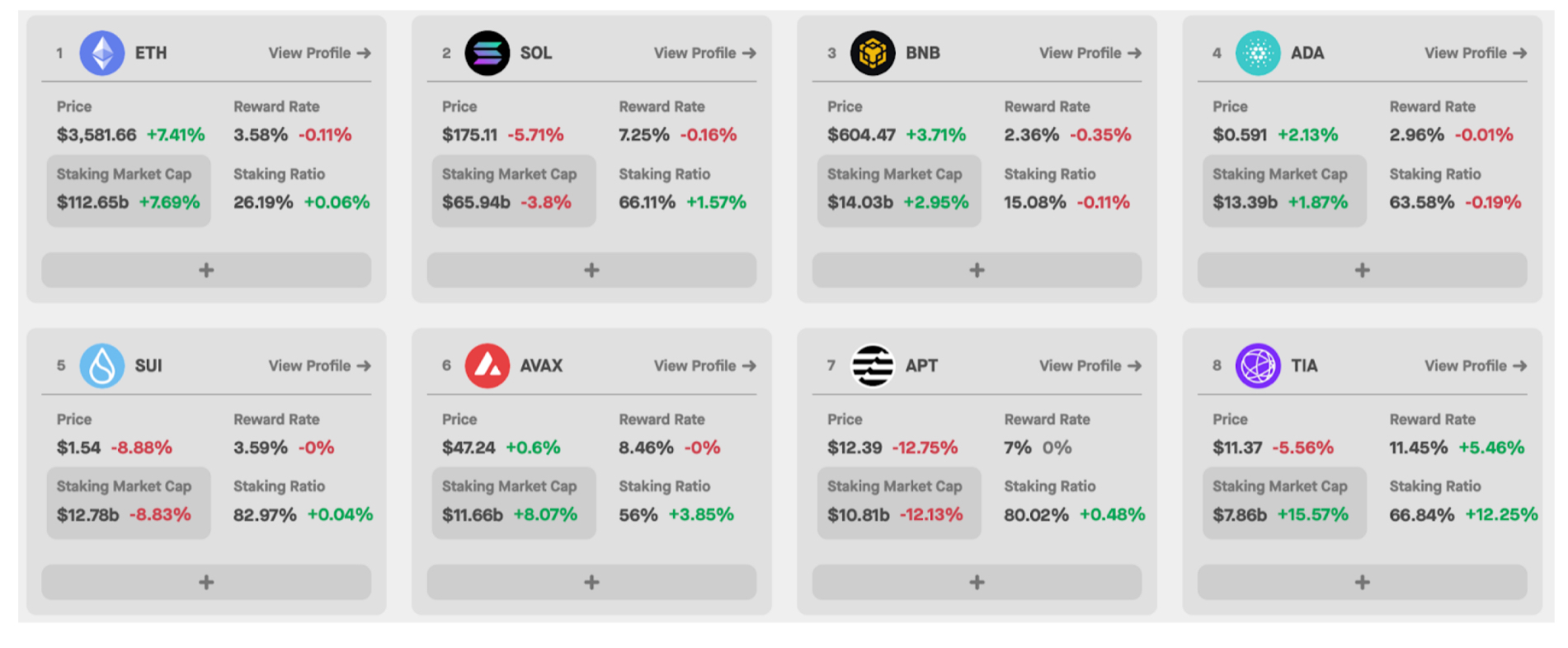Bitcoins current market value has exceeded US$1.3 trillion, but its potential value has not been fully unleashed because it does not support smart contracts and has issues such as expansion. In contrast, EVM tokens such as $ETH and $SOL have shown considerable returns with the support of a prosperous ecosystem.

The BTC ETF has brought a large inflow of institutional funds, and as the Bitcoin halving approaches, the income of Bitcoin miners is about to drop again. How to obtain passive income from the $BTC in hand has become an urgent problem that needs to be solved. However, unlike Ethereum, Bitcoin is not a POS network and has no native staking benefits; it also cannot run smart contracts. Therefore, while ensuring security, improving the capital efficiency of $BTC has become an important task for Bitcoin Layer 2.
As the current Bitcoin Layer 2 leader, Merlin Chain is always committed to finding a breakthrough for $BTC to earn interest. This article will introduce a series of interest-earning gameplay and security guarantees of Merlin Chain, providing new ideas for participants in the Bitcoin ecosystem.
PoS node staking mechanism and $stMBTC
Merlin Chain adopts a multi-token PoS consensus mechanism. Users can pledge $BTC, $MERL or other mainstream BRC 20 assets to compete for node qualifications. Users who pledge $BTC will receive LSD token $stMBTC at a ratio of 1:1. Re-staking using $stMBTC is the core of $BTC interest generation on Merlin Chain.
Before explaining the specific benefits, let’s first take a look at the “underlying needs” and “security” that everyone is most concerned about.
Re-pledge requirements of ecological protocols
Protocols such as middleware and application chains usually face the following problems:
The cost and threshold are too high:Need to build and maintain your own AVS (actively validated service active verification system), which consumes a lot of resources
Security is difficult to guarantee:Verifiers are usually required to pledge their own native tokens. Security is directly related to the value of the pledged tokens. Under the fluctuation of currency prices, the risk exposure of the protocol also changes accordingly.
Security of Merlin Chain
The security of the blockchain depends on its destruction cost. The key to ensuring security is to ensure that the destruction cost is higher than the destruction benefit.
previouslyThere are already articlesVarious security measures of Merlin Chain are described in detail. Here are just a few points:
After users pledge their assets, the assets located on the Bitcoin layer will be deposited in the MPC multi-signature wallet jointly managed by Cobo and Merlin Chain, avoiding single point risks. Cobo is a well-known digital asset custody service provider in the industry, founded by Shenyu. This provides security for Merlin Chain’s pledged assets from the perspective of institutional reputation and law.
Merlin Chain has designed a complete penalty mechanism, using potential penalty risks to constrain node behavior. If a node does evil, pre-pledged assets will be deducted as user compensation.
Merlin Chain supports multiple asset pledges including $BTC and $MERL. Multiple tokens play a role in mutual value support and avoid network risks caused by single token price fluctuations.
Merlin Chain plans to introduce the Bitcoin Time Stamping mechanism, store Merlin Chains on-chain history records on the Bitcoin layer, and use Bitcoins timestamps to avoid long-distance attacks.
By using $stMBTC as the pledge token and setting up a unique slashing mechanism, the ecological protocol can enjoy the same security as Merlin Chain and improve economic efficiency.
No longer need your own AVS, saving a lot of time and money, and reducing operating costs
Since Merlin Chain adopts a multi-token pledge mechanism, the risk of value fluctuations of a single token is dispersed
The strong consensus of $BTC and the penalty mechanism of Merlin Chain provide trust protection for $stMBTC
In addition, for users who intend to maintain the Merlin Chain network but whose hardware equipment and funds are temporarily unable to meet their requirements, Merlin Chain has launched an entrusted pledge mechanism to achieve a greater degree of decentralization.
The delegator can entrust his tokens and rights to the node, and the node will uniformly pledge them to the Merlin Chain, and distribute the corresponding $stMBTC and the portion of the income to the delegator.
Each node can set up its own delegation contract to stipulate how to distribute the income to the delegates. In addition, if the node engages in evil behavior, the interests of the delegator will be harmed together. Therefore, the delegator must choose a trusted node for delegation.
For the ecological agreement
Enjoy the collective security of the Merlin Chain ecosystem
More time, energy and resources can be spent on project innovation
For nodes and delegators
Node income can be obtained, including network fee $BTC and node reward $MERL, and can be reinvested into node operations/delegation
You can use $stMBTC to participate in the pledge of Merlin Chain ecological projects, obtain multiple benefits and governance rights without taking up more funds, and maximize capital utilization.
$stMBTC re-staking income
$stMBTC can be used to provide security for RPC nodes, DA, Oracle, MEV management, cross-chain bridges, Rollup sequencers and other scenarios. With the development of the Merlin Chain ecology, the infrastructure and application chain will usher in a big explosion, and the channels for obtaining re-pledge income of $stMBTC will gradually expand.
In addition, users can pledge $stMBTC into the re-pledge protocol of the Merlin Chain ecosystem to obtain further benefits, including:
1. Solv Protocol
Staking $stMBTC can mint Merlin Chains liquidity strategy token $SolvBTC at a ratio of 1:1, achieving currency-based risk-free returns.
The income source of $SolvBTC is a combination of multiple neutral trading strategies, including Perp DEX market making income, Funding Rates neutral escape strategy, etc., which ensures stable income while minimizing the impact of market price fluctuations on income.
2. StakeStone
$mSTONEBTC is the first income-generating BTC derivative token issued by StakeStone based on the BTC Layer 2 PoS mechanism.
$stMBTC can be exchanged for $mSTONEBTC at a ratio of 1:1, thereby entering the StakeStone liquidity distribution network and enjoying benefits from mainstream pledge pools, re-pledge pools, and LSD blue chip DeFi strategies.
Merlin ecological DeFi income
$stMBTC and $SolvBTC, $mSTONEBTC and other tokens obtained through the re-pledge agreement can be used to participate in a series of DeFi in the Merlin Chain ecosystem to obtain additional income.
DEX
Purpose: Provide liquidity for DEX trading pairs and earn handling fees
Protocol: MerlinSwap
Stablecoin
Purpose: Staking to mint stablecoins
Protocol: bitSmiley
DerivativesDEX
Purpose: Pledge for derivatives trading
Protocol: Surf Protocol
loan agreement
Purpose: Pledge lending
Protocol: Mage Finance, Avalon Finance
LaunchPad
Purpose: used to participate in IDO
Protocol: MerlinStarter, UniCross
Off-chain CeFi income
After users pledge $BTC, $MERL and other mainstream BRC 20 assets to Merlin Chain, these assets will be deposited in the MPC wallet jointly managed by multiple parties, thereby minimizing single-point risks.
Users can choose to apply CeFi (centralized finance) custody services for layer 1 assets. Merlin Chain cooperates with top asset management teams that have maintained positive returns for a long time to mirror users on-chain assets on exchanges and achieve over-the-counter settlement. Users can safely access the exchanges deep liquidity and earn income through diversified trading strategies, while funds are safely retained in the MPC wallet on the chain, improving asset security and transaction efficiency.
Access to CeFi will bring significant gains to the off-chain financial market for Merlin Chains pledged assets, including pledge mining, lending services and investment products. At the same time, these assets will be supervised by a transparent public disclosure mechanism and asset use rights authorization thresholds to ensure the integrity and credibility of the system.
Babylon staking income
In addition to CeFi, users can also choose to use Babylons staking protocol for layer-1 pledged $BTC to earn staking income.
Babylons pledge is trustless and non-custodial. The pledged $BTC will be kept in the multi-signature wallet without transfer, and you can apply for un-pledge at any time and get the return in just a few days. Users can also choose to stake $BTC to multiple PoS networks to achieve additional benefits.
In addition, Babylon will also provide further consensus security protection for Merlin Chain. It stamps the Merlin Chains on-chain information with Bitcoins timestamp, thereby borrowing the security of Bitcoin as a timestamp server.
Applying re-pledge on Bitcoin with PoW consensus is not easy. It is full of challenges and is also the key to activating the huge liquidity of Bitcoin. As the leader of Bitcoin Layer 2, Merlin Chain has made many attempts in the field of $BTC re-pledge, including product development and ecological cooperation. It is expected that Merlin Chain, as a navigator, can open up new paths and bring more possibilities to the Bitcoin ecosystem and the entire crypto industry.



